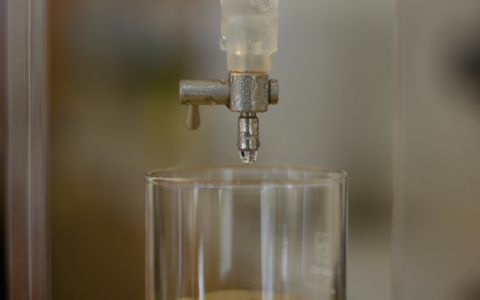On Monday 1 May 2023, the negotiations of the Stockholm, Basel and Rotterdam Conventions, which aim to protect the planet from pollution by the world's most toxic substances, began in Geneva. On the very first day of the meeting, Arnika's Jindřich Petrlík stood up in the plenary on behalf of NGOs from all over the world to present their demands for better regulation of persistent organic pollutants in waste.
You can read the text of his intervention:
Thank you Mr. President,
I speak on behalf of IPEN, a network of more than 600 civil society organizations in over 120 countries working for a toxics-free future. We appreciate the work done by SIWG on the update of the Technical Guidelines addressing the POPs wastes, in particular additional information about technologies able to destroy POPs wastes. However, we regret that full information about destruction efficiency of some technologies is often missing or omitted such as in the case of cement kilns or metallurgy.
We also welcome the options for limit values for POPs in wastes developed by the expert group. However weak options for limits for POPs waste set in the Technical Guidelines still lead to recycling of vast amounts of POPs. The most recent study conducted in Kenya revealed the highest ever measured level of dioxin-like PCBs in free range chicken eggs raised close to market with e-waste. Low POPs Content level for dioxin-like PCBs is still missing in the guidelines.
Another global study estimated that we lose the control over approximately 7.5 kg TEQ of polychlorinated dioxins and furans in wastes such as incineration fly ash every year. This amount of dioxins is equal to the tolerable intake for the entire populations of 133 planet Earths. We are losing control over the most toxic chemicals that the Stockholm Convention aimed to eliminate. This is a direct consequence of very weak Low POPs Content levels defended by few countries protecting economic interests. Another consequence of this weakness is the free movement of POPs in wastes across borders because there are no other regulatory barriers than the Low POPs Content Levels.
21 authors looked at data available about contamination of chicken eggs by dioxins in reviewed study. Almost 90% of surveyed areas around the world were not safe for production of free-range eggs which remain an important part of locally grown food at many place worldwide.
A new study is based on analyses of consumer products from 26 countries and indicates the potential of significant human exposures, especially for young children to PBDEs and related harmful chemicals in toys, including brominated dioxins. This calls for strict limit value for PBDEs. This should be established at a level of 50 mg/kg as proposed by the African region.
All these studies are polite wake up calls. Decisions to set Low POPs Content Levels are often political ones, driven only by the criteria of cost minimisation for industry. This approach undermines the objective of the Stockholm Convention which is not about avoiding costs for treatment of wastes but “is to protect human health and the environment from POPs”. The less visible costs of lost health and environmental values must be the priority criterion when setting the limits for POPs in wastes. Potential costs of health damage are many folds higher than those for treatment of POPs waste. It is time to remember the words of indigenous people “When the last tree is cut, the last fish is caught, and the last river is polluted; when to breathe the air is sickening, we will realize, too late, that wealth is not in bank accounts and that we can’t eat money.”
Thank you Chair







